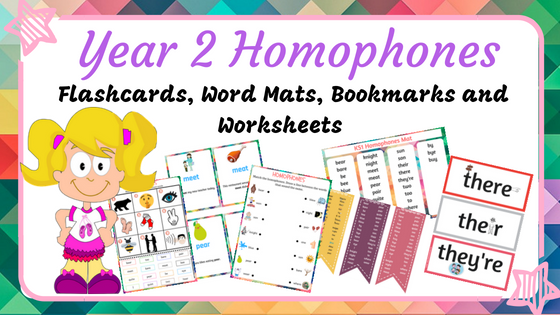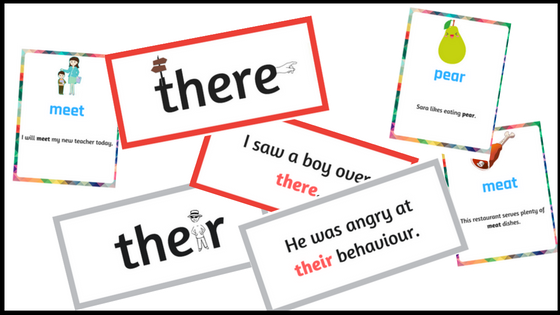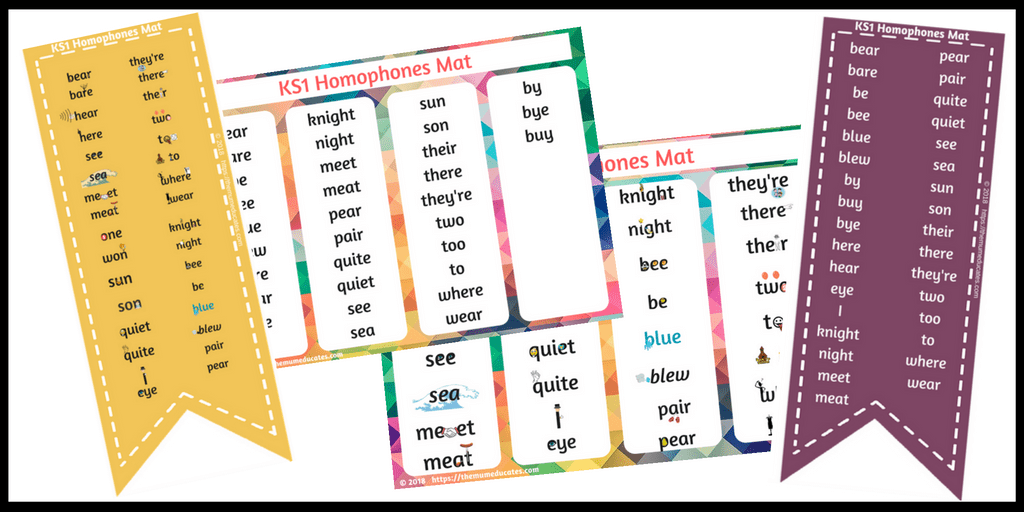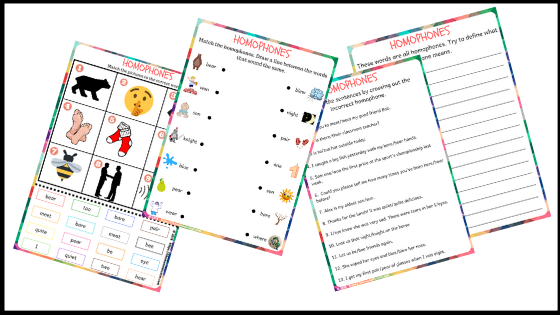Homophones are words that sound same but have different spelling and meaning. Children often find them tricky to remember. Our in detail Year 2 homophones bundle will make learning homophones fun and easy for your children. The beautiful pictures and wonderful illustration will make learning a breeze.
Product description:
What is included:
Get kids excited about homophones with these amazing flashcards This is a pack of Homophones Flashcards, Word mat, Bookmark and Worksheets to practice and learn homophones.
The flashcards are available in two different formats. There are a total of 35 flashcards along with sentences to make children understand better.
Practice with flashcards, print the word mat to help them in their writing and finally practice with our 4 wonderful worksheets.
35 homophones flashcards:
This set includes 16 pairs of homophones include bare/bear, be/bee, blue/blew, here/hear, there/their/they’re, night/knight, one/won, quiet/quite, see/sea, sun/son, to/too/two, pair/pear, wear/where, meet/meat, I/eye and by/buy/bye.
2 Homophones Words Mat and 3 Bookmarks:
Two-word mats are also included in the pack. The first word mat is with pictures which makes it easier for the children to understand the differences between the homophones whereas the other word mat has only text for higher level kids. Cute bookmarks are also included.
4 Homophones Worksheets:
The pack also includes associated worksheets which will help the children revise what they have learned through the flashcards. This combination of learning and revising will firmly cement these words into the minds of the students.
£1.99
Please Note: This is a digital file.
Activities suggestions with flashcards:
Here are some activities that you can do at home to help children learn their homophones
1. Use it as a homophone matching game were children are required to match according to the way the word is pronounced.
2. Play concentration and memory game with two or more children where all the flashcards are spread down and placed downwards. Ask the first child to turn over 2 cards at a time. If the two cards are homophones the child win that set and can keep them with himself. If they are not then the child has to flip them back and the next child will take a turn. The child with most cards will win.
3. Try and use a pair of homophones in one sentence. For example, “She ate eight candies.” Or I want to have an ice-cream too. The child who makes more sentences will win.
4. To check their vocabulary comprehension use pair of homophones flashcards like son/sun and ask questions like tell me “Which is yellow and shines?” or “Which is a person?”




